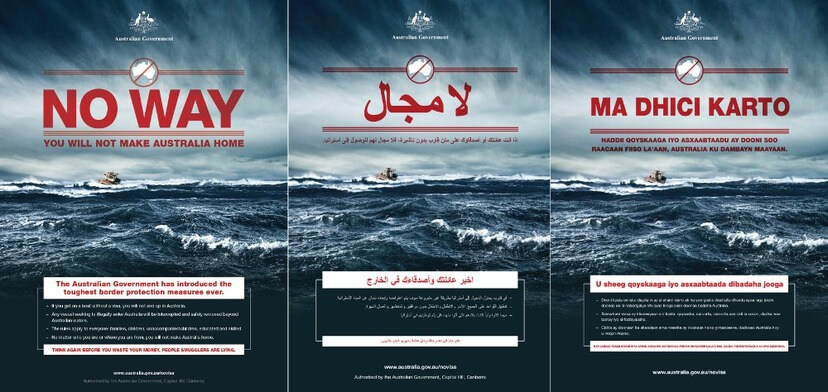
Debates of the last week around the shocking nature of Immigration Minister Peter Dutton’s comments that Australia made a “mistake” in allowing Lebanese Muslim migrants into Australia should really have come as no surprise.
In the murky and inconsistent world that makes up the last 15 years of Australia’s immigration policy, the comments by Mr Dutton and his subsequent refusal to apologise for them are perhaps the most honest reflection of his Ministry’s rhetoric to have been explicitly stated since the White Australia Policy was abolished.
The Migration Act of 1996 may have outwardly removed race-driven restrictions on which individuals or groups the Australian government deemed acceptable enough to accept within its shores, but the machinations of visa and citizenship decision-making in modern-day Australia are a clear indication that racism remains, to this day, embedded in Australia’s immigration policies.
It is merely disguised as “risk assessment” based on a person’s country of passport.
The Department of Immigration and Border Protection (DIBP), as it is presently called, purports to treat each visa and citizenship application on its merit, irrespective of the country of origin of the applicant. It claims to be open and accountable to the Australian community under the law and within the framework of Ministerial responsibility and respectful of all people including their rights and their heritage.
And yet, the evidence of institutional racism is reflected in the DIBP’s service standards, the evolving focus of immigration policy over the last 15 years, and the continuous changes to the Department’s name and branding since its establishment in 1945.
For instance, in processing applications for visas and citizenship, the DIBP abides by service standards, which are indicative processing time-frames for decisions on visa and citizenship applications. Generally, these time frames can vary, depending on a range of factors including an applicant’s country of passport and the length of time taken to receive additional information required from areas outside the Department, particularly in relation to health, character and national security.
In reality, however, the Department’s service standards are better reflected in the terminology it uses to classify applicants’ countries of passport origin as “low risk” and “high risk” countries. If an applicant holds a passport from a country that is deemed to be “high risk” by the DIBP, then the time it takes to process that application will inevitably increase due to more rigorous character and security checks.
A full list of these “high risk” and “low risk” countries can be found on the DIBP’s website but, in summary, the low risk countries are largely European countries and a small number of Asian countries. Meanwhile, there are no Arab or African countries that are considered to be “low risk”.
Ultimately, these service standards are an embodiment of the DIBP’s institutional racism, in that they regularly and systematically provide an advantage to some ethnic and cultural groups while disadvantaging and marginalising others with respect to visa and citizenship eligibility in Australia.
If this seems a flimsy argument, then reflecting on the historical and recent changes to the Department’s name and branding should at least render it as unsurprising that the current Minister of Immigration and head of the DIBP believes it perfectly acceptable to single out a cultural and religious group to draw links between crime and immigration.
From 1945 to 1974, the Department was simply called the Department of Immigration. In 1974, the name changed to Department of Labor and Immigration. This lasted until 1976, when the name changed again; this time, it became the Department of Immigration and Ethnic Affairs. In 1993, the Department became known as the Department of Immigration, Local Government and Ethnic Affairs. From 1993 to 1996, it was known again as the Department of Immigration and Ethnic Affairs, and then subsequently it became known as the Department of Immigration and Multicultural Affairs.
Between 2001 to 2006, it was known as the Department of Immigration and Multicultural and Indigenous Affairs. In 2006, the name was changed back to the Department of Immigration and Multicultural Affairs. From 2007 to 2013, it was known as the Department of Immigration and Citizenship.
Since 2013, however, the Department has been titled with its current branding: the Department of Immigration and Border Protection. While the focus of the immigration policy was historically focused on increasing, promoting and managing migration to Australia, the current department is more concerned with protecting Australia’s border and managing the movement of people and goods across it. Sadly, this focus is a clear indicator that we should expect the same kind of rhetoric from Mr Dutton and other government Ministers.
For those who’ve come across the seas, it seems we no longer have boundless plains to share.
The writer of this article has chosen to withhold their name from being published.
Categories: Politics
